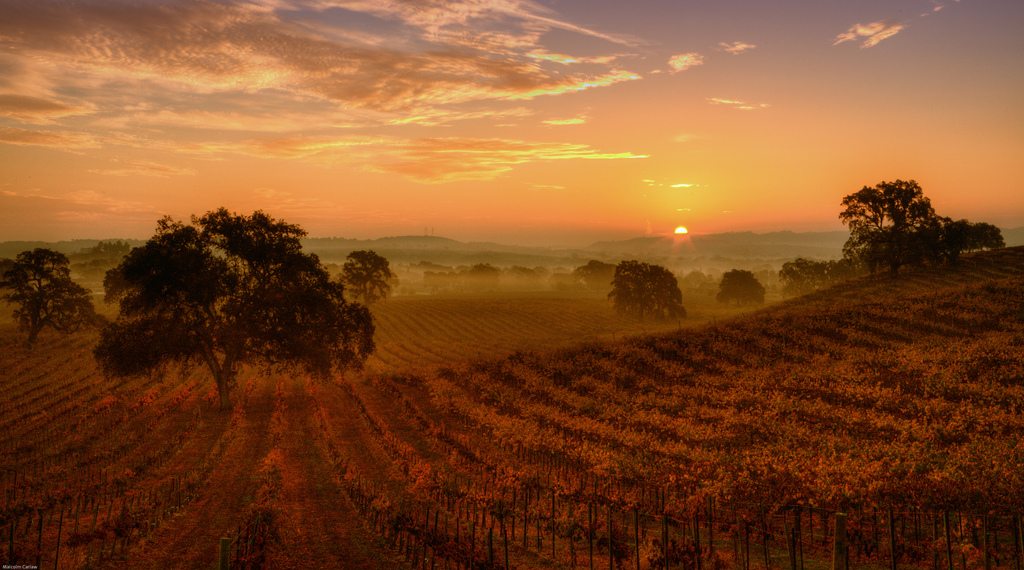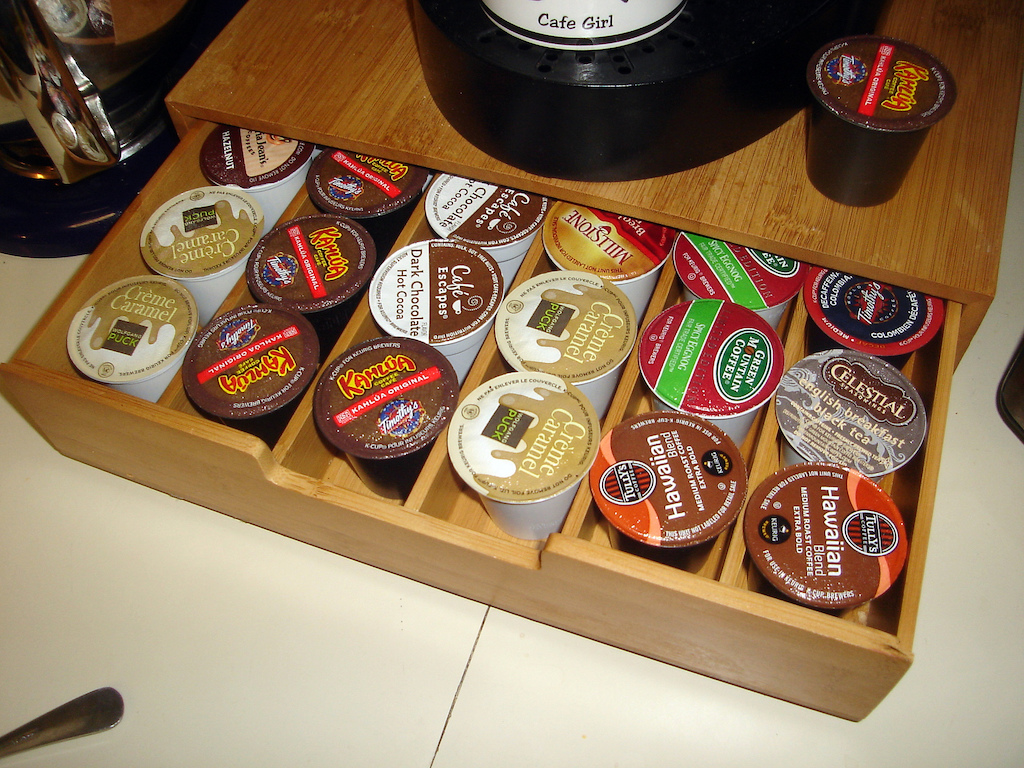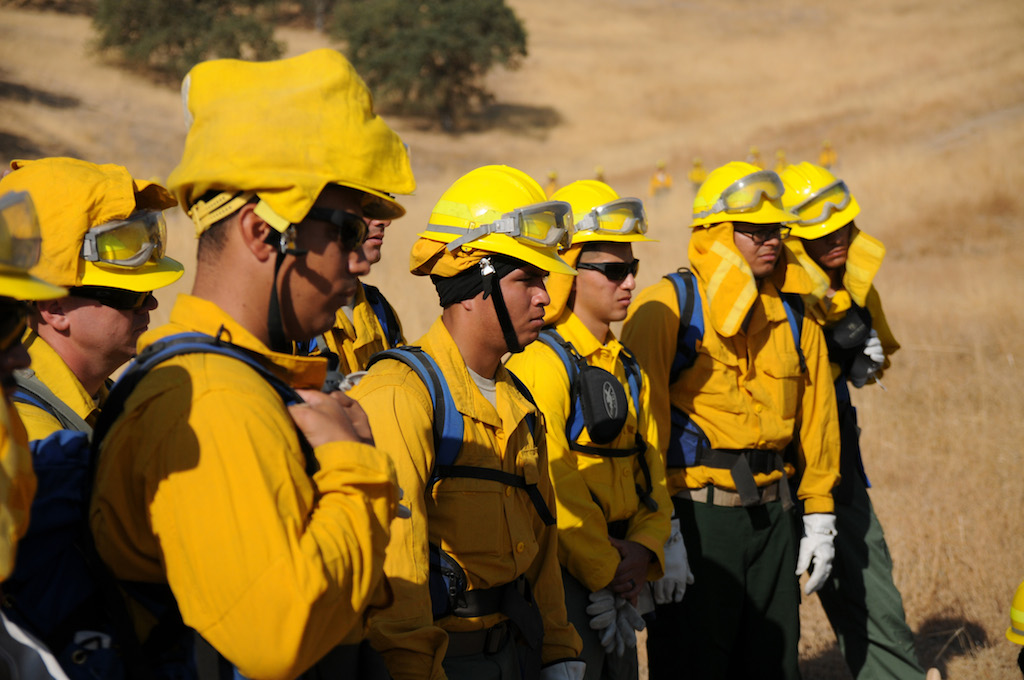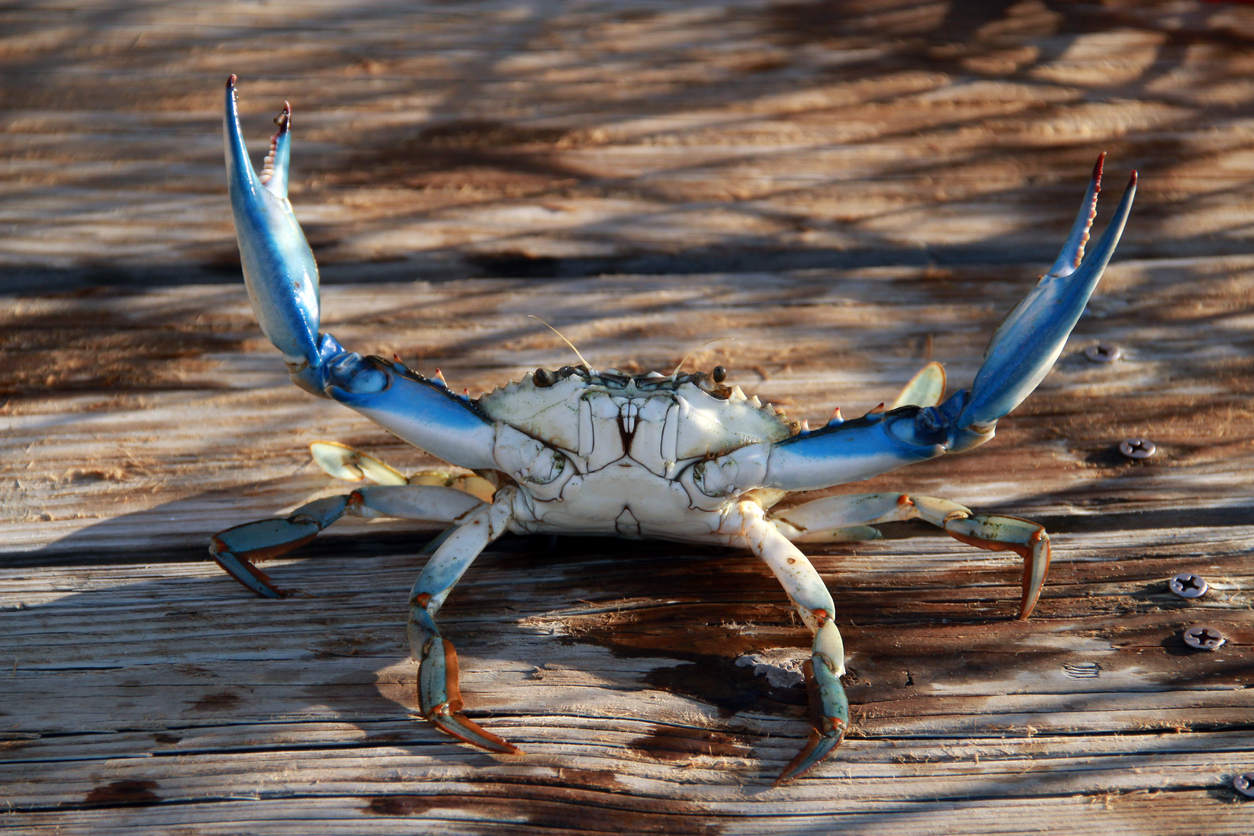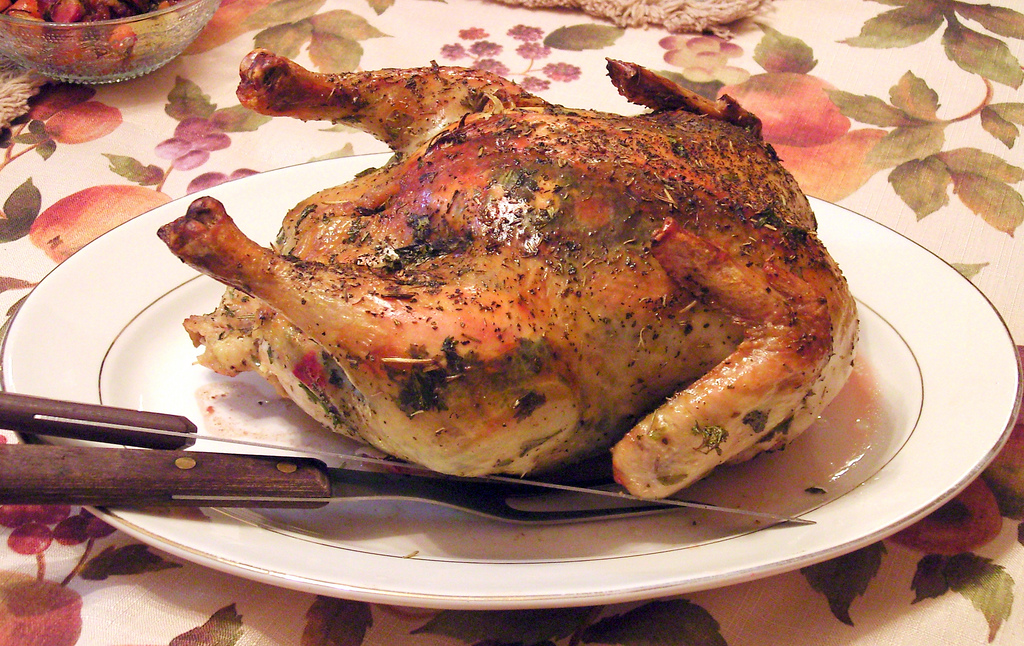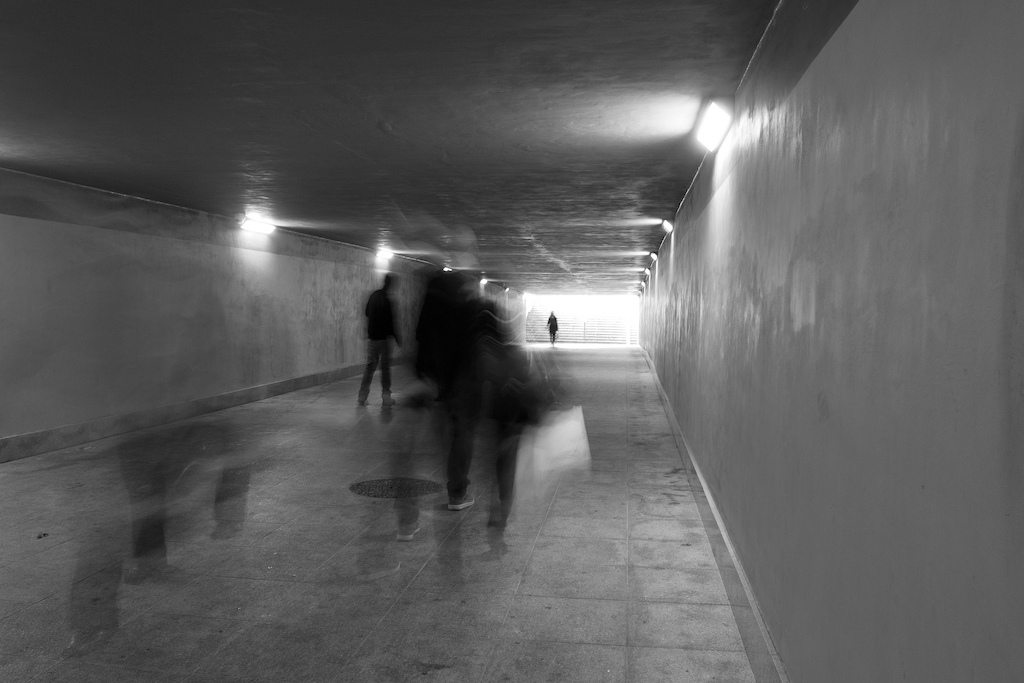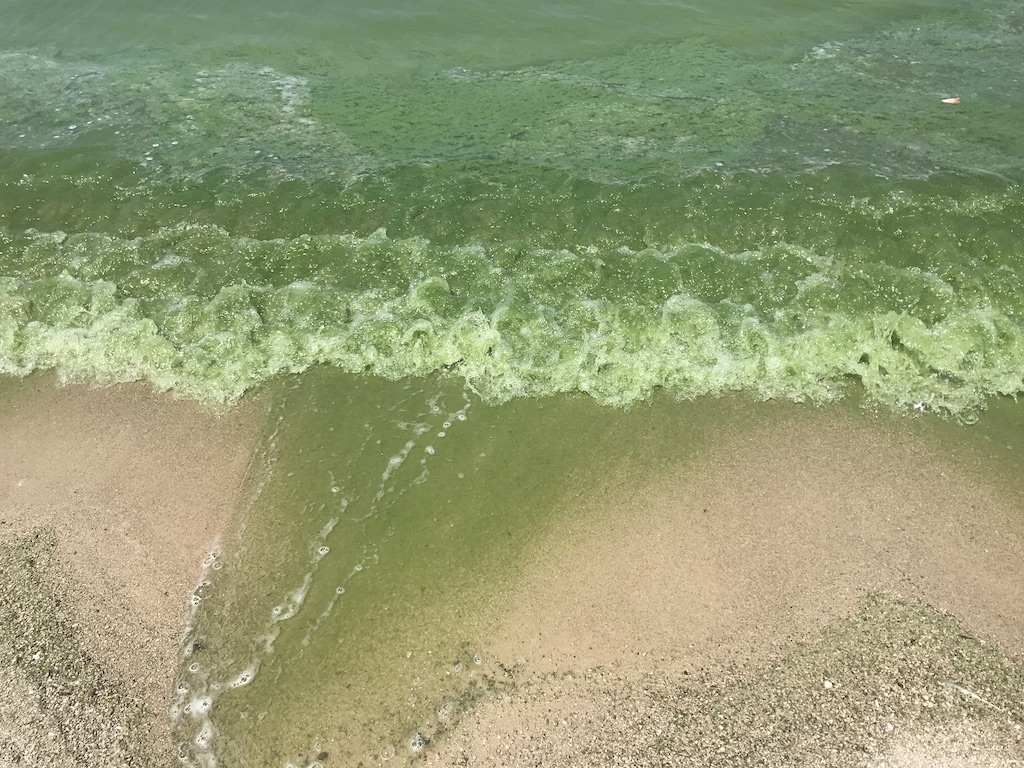This summer, as wildfires raged across as many as 2 million acres of American land, indiscriminately scorching forests and farmland and blanketing cities like Seattle and Spokane, Washington with smoke, winemakers all over the West and Northwest regions scrambled to protect their vines. At Bien Nacido Vineyard in California’s Santa Barbara County, staff members’ efforts to battle the Alamo fire—now 100 percent contained—bordered on cinematic: The blaze came within yards of the property and damaged neighbors’ crops, but the team used water trucks and hoses to douse the pathways around the grapes with water, resulting in a “line of demarcation between blackened hills and green vine rows [that] was thickly outlined by these barrier roadways,” reported the Los Angeles Times in July.
But a wildfire’s threat to a vineyard is more complex than burned earth and withered vines. Even if a fire leaves grapes untouched, the fruit can be affected by “smoke taint,” a phenomenon that gives the resulting wine a charred, ashy taste. Nicholas Miller, vice president of sales and marketing for the entity that manages Bien Nacido, says the smoke from the Alamo fire blew north and west of the vineyard. “At this point, we are not experiencing any of the smoke damage,” he says. “We were taken care of in all directions.”
Vintners in Oregon, however, may not have been so lucky. In the southern Rogue and Umpqua valleys—regions which produce about 20 percent of the state’s grapes, according to The Oregonian—many vineyards saw prolonged smoke exposure from the Chetco Bar, Miller Complex, and High Cascades Complex (a group of 20 fires burning in four areas) fires.
When smoke damage is suspected, grapes are often sent to labs for testing. The problem is largely invisible to the naked eye: It doesn’t affect the appearance or texture of the grapes, and recent research from the Technical University of Munich indicates it doesn’t affect the taste of raw grapes much, either. “It only becomes apparent in the finished wine that the vineyard was exposed to a fire and the final product is of poor quality,” study author Katja Härtl told industry publication Food Manufacturing. And even if smoke damage is identified and treated at any stage of production, the results aren’t guaranteed. A 2012 newsletter from Washington State University warns that even after reverse osmosis or ultra-filtration, the effects of smoke taint can disappear, only to reappear again as the wine ages.
Oregon winemaker Herb Quady told The Oregonian that initial tests have indicated this year’s grapes may be less damaged than he initially feared. “If we have the data, we can make solid red wines,” he said. And even smoke-damaged grapes aren’t totally useless: The aroma sits primarily on the skin, so vintners can adjust by making wine varieties that require less skin contact time. “We’re faced with making rose as the best alternative instead of dropping it on the ground,” Quady said.
It’s a lucrative business, winemaking. Oregon wine sales totaled more than $529 million in 2016, according to Southern Oregon University’s Oregon Vineyard and Winery Census Report. And The Wine Institute estimates California’s 2016 wine sales had a retail value of more than $34 billion. But this year’s smoke damage seems unlikely to have a major impact on the industry as a whole. “It’s best not to overplay it,” expert Gordon Burns told Wine Enthusiast last year after fires threatened California vines, prompting similar concerns. “Pretty much every year, there’s been a fire issue somewhere, so it’s bound to happen.” And the 2017 wildfires, though dramatic, are not even particularly unusual or unique, fire ecology professor Philip Higuera told Citylab this month.
Still, Higuera said that climate change prediction models show that bad wildfire years will become more and more common. “The fire season has gotten significantly longer across the West, on order of 30 days or more during the past few decades.”
In the meantime, wineries are taking extra precautions to protect their crops by maintaining fire roads on their farms that enable fire trucks to access a blaze, removing falling trees, and clearing areas around water troughs, the San Luis Obispo Tribune reports. And winemaker Herb Quady told The Oregonian he’s had some successful trials adding activated carbon to smoke-damaged grapes to minimize ashy flavors. Maybe future wine drinkers won’t even mind a little smoky finish. As the relentlessly positive Burns reassured Wine Enthusiast last year, “there are people who have had exposure and not thought of it as a negative.”
